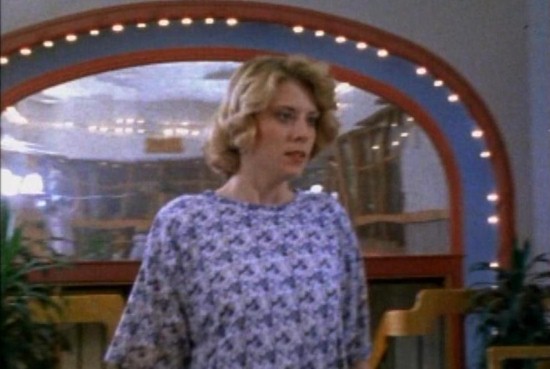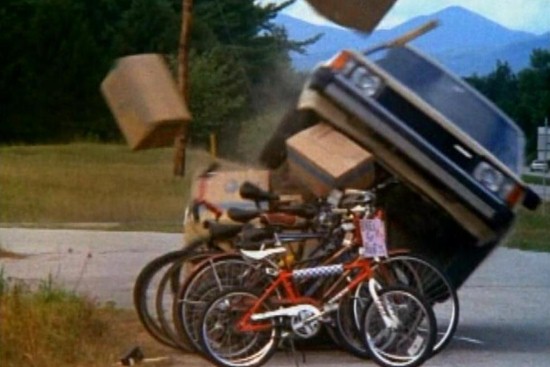Of Dreck & Drink: Time Chasers and WhistlePig Rye Whiskey
A guide for those with bad taste in movies and good taste in booze
For more than a dozen installments now, Of Dreck & Drink has held rigidly to a pretty specific definition: One craft beer. One bad movie. One synthesis of the experience. But who’s to say that the “drink” portion always has to be beer? What if a film calls for something a little higher octane? And what if you’re gifted with an opportunity to drink some of the finest whiskey in the world? My policy, suffice to say, is that you take that chance and don’t look back.
And so, when someone from WhistlePig asked if I wanted to try some samples of their award-winning 100-proof rye, I knew I had to find the perfect film to act as its companion. WhistlePig is a little unique in its origins, being bottled in Vermont, not exactly a state known as a hotbed of the craft spirits movement. I began to wonder: Is there a terrible movie out there that is particularly “Vermont” in its delivery? What are the identifiable characteristics of Vermont on a national level, anyway? Maple syrup and cheese references?
And then it hit me—wasn’t there once a particularly goofy film featured on Mystery Science Theater 3000 that took place entirely in Vermont? A film that caused Crow T. Robot to dub the state “the other, smaller Wisconsin”? A film whose credits ended with an angry Tom Servo ranting “I really, really hate the citizens and officials of Rutland, Vermont. I’m not kidding, Mike. I never liked the citizens and officials of stupid Rutland, Vermont. This is just the nail in the coffin, as far as I’m concerned. Go to hell, citizens and officials of Rutland, Vermont!”
And that film is called Time Chasers. It’s the story of a man, his time-traveling plane, blatant copyright infringement and the natural beauty of the majestic Vermont outdoors. And it’s a perfect accompaniment to 100-proof whiskey.
The Whiskey
WhistlePig’s flagship whiskey is a 10-year, 100 percent rye, which is uncommon in several respects. One, you don’t see a ton of rye on the shelf carrying a 10-year age statement, as most rye tends to be consumed significantly younger and age statements aren’t as big of a draw as they are in bourbon or especially scotch. Two, there are very few ryes that are actually made with 100 percent rye—in order to be a “rye whiskey,” an American whiskey simply needs more than 51 percent rye in the grist—the rest is usually a combination of corn, wheat or other flavor grains for balance. In particular, there’s almost always at least a little bit of corn in the grist to give the resulting whiskey a bit more richness or caramel-like sweetness, because rye tends to be very dry. This, however, isn’t the case with WhistlePig 10 year, perhaps owing its richness to the fact that it’s also a burly 100 proof instead of the “standard” 80 or equally common 90.
On the nose, this rye is initially intense and fusel—you immediately know this is a strong, assertive dram you’re dealing with. As you get past the alcoholic heat, you start to pick up the waves of peppery rye spice and the expected vanillans, but where the whiskey really shines is in its flavors. An intense burn begins as it coats the palate, stronger even than other 100-proof bottled in bond whiskeys you may have sampled—things like Old Grand Dad Bottled in Bond or the regular Knob Creek 9 Year. Then a tidal wave of spice arrives—so much peppery rye, and a rye bready maltiness, followed by just enough brown sugar sweetness. Further drinks, once the taste buds have adjusted to the intensity of the rye flavors in particular, reveal more of the vanilla and sugar cookie sweetness, before some curious, almost berry-like fruitiness and cocoa notes, as well. From start to finish, it’s an extremely complex, assertive and deep dram of whiskey—you know, tasting it, that it would make a superb Manhattan, but that almost seems like a waste of great whiskey that might as well be consumed neat for maximum appreciation of its subtleties.
It’s the whiskey that the villain in Time Chasers would drink, if only he was about five times more dignified.
The Film
When one starts doing a little bit of research into how Time Chasers came to be, and sees that it was directed by a 20-year-old, it becomes a little harder to hold its myriad flaws against it—or at least they become much easier to understand. Despite that, it truly is one of the more entertaining and light-hearted films to ever be featured on MST3k—it’s bad in ways that make it inherently more watchable, rather than less. One could argue that the same film, handled a bit more competently, would be much less fun. Watching it outside the context of the TV show, it’s still clear how awful it is, but it’s never really a slog.
Time Chasers feels like an idea born in the car ride home after an excitable, 16-year-old David Giancola saw Back to the Future for the first time. All of the same elements are pretty much there, except not-so-subtly reversed in such a way that one would think he was actively trying to avoid it being labeled as the rip-off it was. The time machine car is now a plane. The main conflict revolves around protecting Earth’s future rather than a journey into the past. And there’s now a suited, corporate villain rather than a high school bully to contend with.
-

-

-

-

-

-

-

-

-

-

-

-

-

-

-

-

-

-

-

-

-

-

-

-

-

-

-

-

-

-

-

-

-

-

-

-

-

-

-

-

 Tell me that doesn’t scream “leading man.”
Tell me that doesn’t scream “leading man.” The office of a powerful and influential man.
The office of a powerful and influential man. I hate when a pile of carboard boxes just leaps out in front of you.
I hate when a pile of carboard boxes just leaps out in front of you.






































